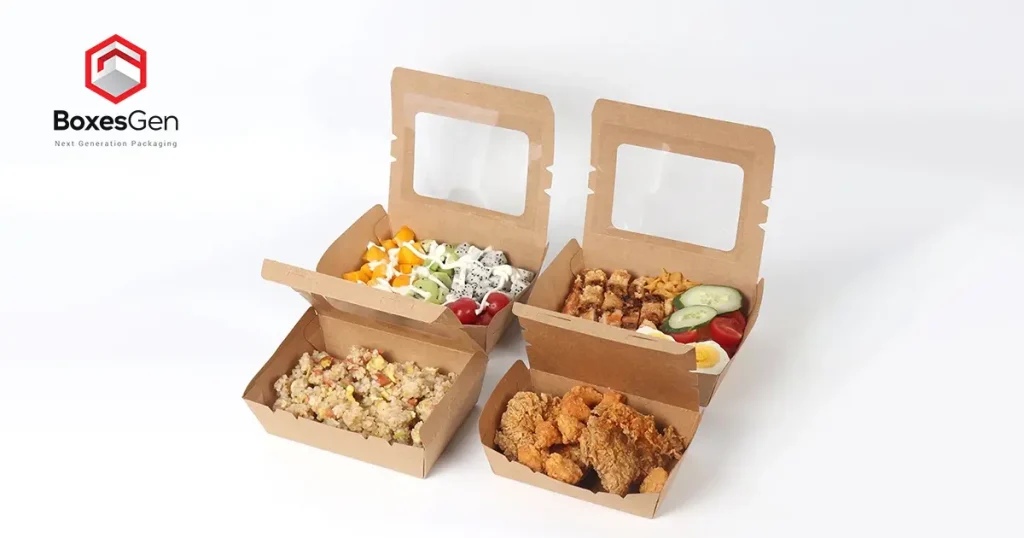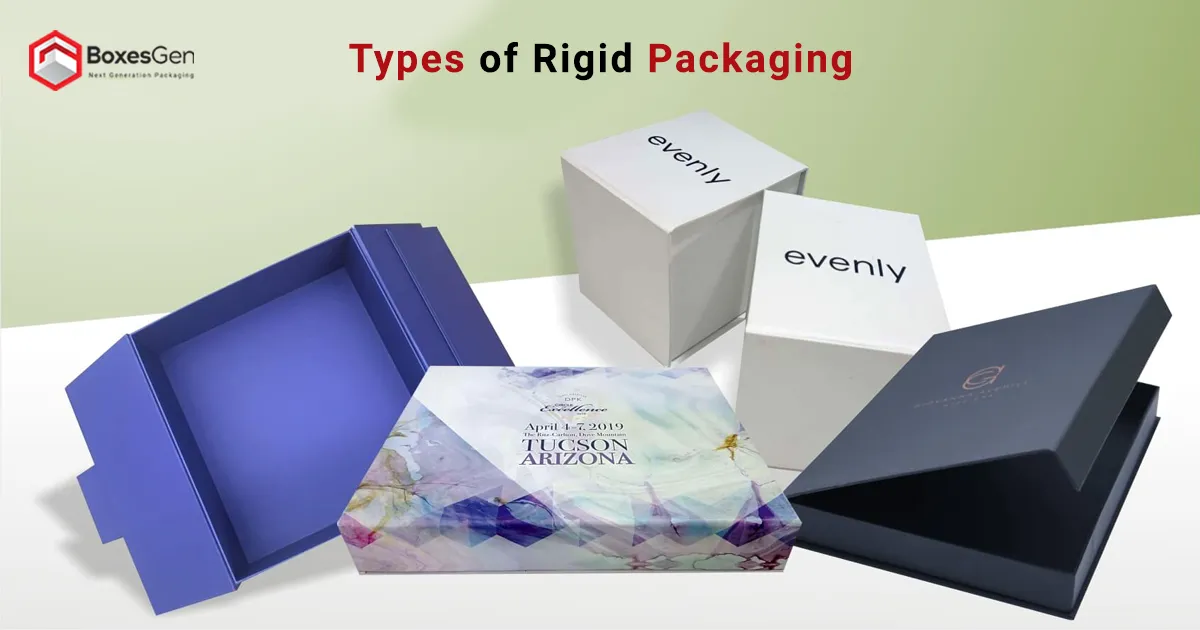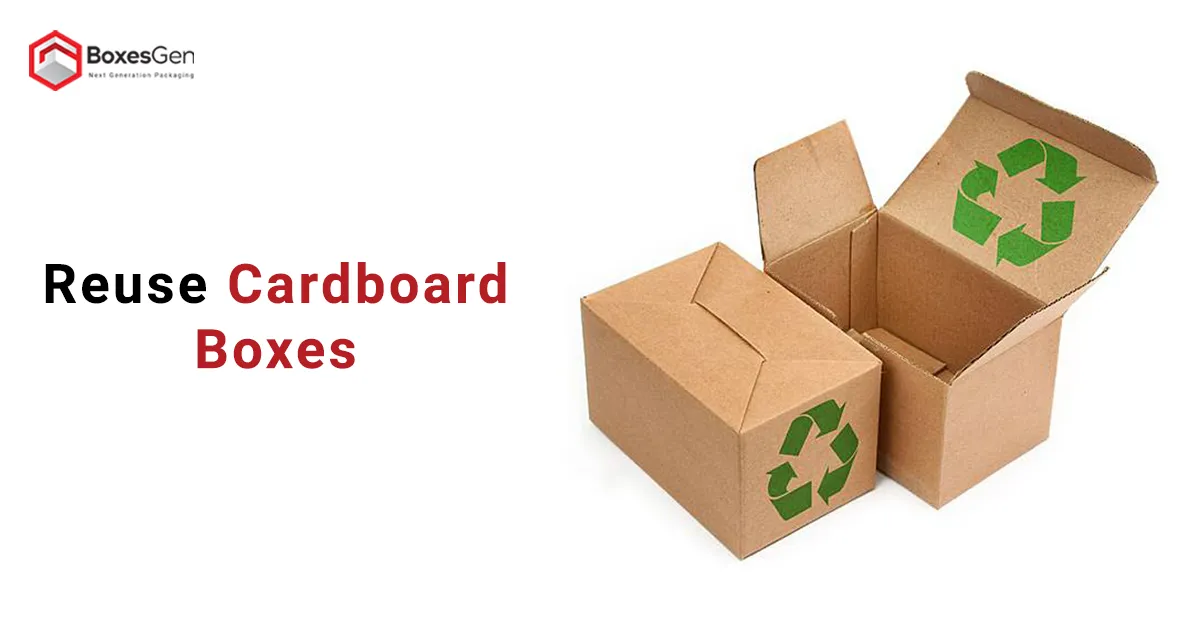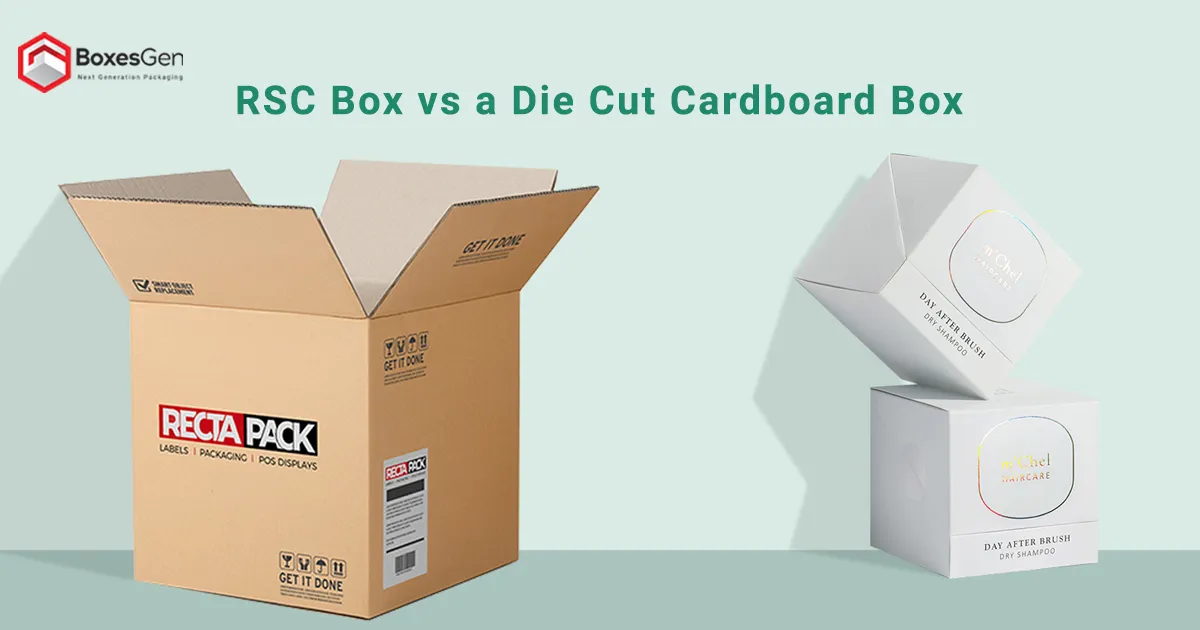A Guide on Eco-Friendly Food Packaging for Small Business
In recent years, consumer preferences have shifted towards eco-friendly products, including the packaging used for food items. Small businesses in the food industry are embracing sustainable practices to meet these evolving demands. Eco-friendly food packaging demonstrates a commitment to environmental responsibility and serves as a powerful marketing tool, attracting eco-conscious customers. This comprehensive guide will explore the various aspects of eco-friendly food packaging for small businesses, including custom food boxes, sustainable materials, food subscription boxes, and packaging solutions for food delivery.
1. The Importance of Eco-Friendly Food Packaging
The environmental impact of conventional food packaging, such as plastic containers and Styrofoam boxes, has become a growing concern. These materials take centuries to decompose, polluting the environment and threatening wildlife. As consumers become more environmentally conscious, businesses that adopt eco-friendly food packaging gain a competitive edge and improve their brand reputation.
2. Understanding Eco-Friendly Food Packaging
Eco-friendly food packaging refers to using sustainable materials and design practices to minimize the environmental impact of packaging. It involves selecting biodegradable, compostable, or recyclable materials that can be reused or safely returned to the environment.
3. Benefits of Eco-Friendly Food Packaging for Small Businesses
Brand Differentiation: By adopting eco-friendly packaging, small businesses can stand out in a crowded market and appeal to environmentally conscious consumers.
Customer Loyalty: Eco-friendly initiatives build trust and loyalty among customers who appreciate businesses that actively work towards reducing their environmental footprint.
Regulatory Compliance: Many regions have strict regulations regarding single-use plastic and non-biodegradable materials. Adopting eco-friendly packaging helps businesses comply with these rules.
4. Sustainable Materials for Eco-Friendly Food Packaging
- Biodegradable Materials
Bioplastics: Made from renewable sources like cornstarch, bioplastics decompose naturally, reducing the long-term environmental impact.
Bagasse: Derived from sugarcane waste, bagasse is a sturdy and compostable material suitable for takeaway containers.
Mushroom Packaging: Made from agricultural waste and mushroom roots, this material is biodegradable and lightweight.
- Compostable Materials
PLA (Polylactic Acid): Derived from cornstarch, PLA is compostable and can be used for packaging items like salad containers and cutlery.
Compostable Films: These films can wrap perishable foods and will break down into compost when disposed of properly.
- Recyclable Materials
Cardboard: A widely used recyclable material, cardboard can be used for custom food boxes, food delivery containers, and packaging inserts.
Glass: Although heavier than other materials, glass is infinitely recyclable and an excellent option for certain food products.
5. Custom Food Boxes – Design and Benefits
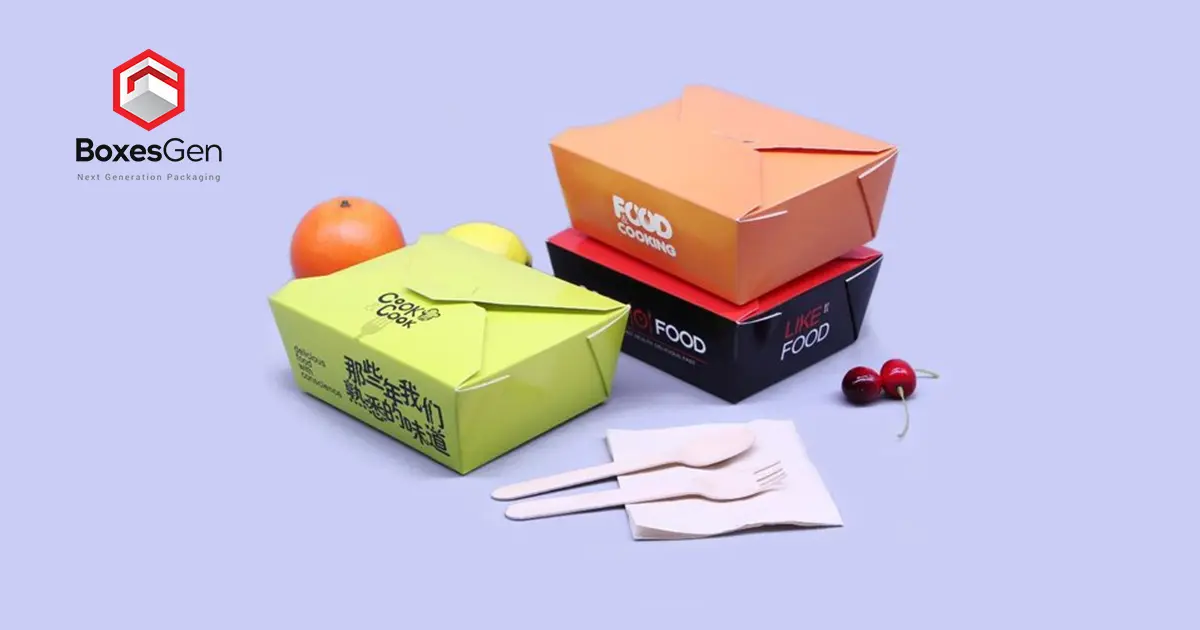
- Importance of Custom Food Boxes
Custom food boxes allow small businesses to showcase their brand identity, logo, and messaging. Tailor-made packaging enhances brand recognition and leaves a lasting impression on customers.
- Sustainable Design Practices
Minimalism: Simple designs use fewer resources and are often eco-friendly. Avoid excessive printing and choose soy-based inks when branding is required.
Size Optimization: Using the right-sized sushi box reduces material waste and transportation emissions.
Reusable Features: Consider adding resealable components or containers that customers can reuse.
6. Advantages of Custom Food Boxes
Brand Promotion: Custom packaging acts as a walking billboard, promoting your brand wherever it goes.
Product Protection: Well-designed custom boxes provide better protection for food items during transit.
Unboxing Experience: Unique packaging enhances the unboxing experience, creating a positive association with your brand.
7. Food Subscription Boxes: A Sustainable Trend
- The Rise of Food Subscription Boxes
Food subscription boxes have gained immense popularity in recent years. They offer convenience, variety, and a curated experience, making them attractive to consumers seeking hassle-free meal solutions.
- Sustainable Packaging for Food Subscription Boxes
Reusable Packaging: Encourage customers to return the packaging for reuse or use durable, long-lasting materials.
Eco-Friendly Fillers: Replace plastic bubble wrap with biodegradable alternatives like shredded paper or compostable packing peanuts.
Minimal Packaging: Opt for minimal packaging without compromising product protection.
8. Eco-Friendly Food Packaging for Food Delivery
- Challenges of Food Delivery Packaging
Food delivery packaging must maintain food quality, temperature, and presentation while being environmentally responsible.
- Sustainable Solutions for Food Delivery
Insulated Containers: Use biodegradable or reusable insulated containers to keep food fresh without relying on excessive packaging.
Recyclable Delivery Bags: Replace single-use plastic bags with recyclable options made from paper or cloth.
Delivery Optimization: Implement efficient delivery routes to reduce fuel consumption and emissions.
9. Overcoming Challenges in Adopting Eco-Friendly Food Packaging
While eco-friendly food pasta salad box offers numerous benefits, small businesses may encounter challenges during the transition. Addressing these obstacles is crucial to successfully implementing sustainable practices.
- Cost Considerations
One of the main concerns for small businesses is the perceived higher cost of eco-friendly materials compared to conventional packaging options. However, it’s essential to consider the long-term benefits of sustainable paper lunch box packaging, such as enhanced brand reputation, customer loyalty, and potential cost savings in waste management.
To offset initial expenses, businesses can explore local suppliers, bulk purchasing options, government incentives, and grants supporting sustainable initiatives. Additionally, as demand for eco-friendly materials increases, costs will likely decrease, making them more accessible for small businesses.
- Finding Reliable Suppliers
Identifying reliable suppliers of eco-friendly packaging materials is crucial. Businesses must conduct thorough research to ensure the chosen materials meet sustainability claims and comply with relevant regulations. Certifications like “Certified Compostable” and “Biodegradable” from recognized organizations can assure the authenticity of the materials.
Building strong relationships with suppliers can also lead to customized solutions that align with the unique packaging needs of small businesses.
- Packaging Performance and Food Safety
Eco-friendly packaging should not compromise the quality and safety of the food products it contains. Small businesses must ensure that the selected materials protect food during transportation and storage, maintaining freshness and preventing contamination.
Conducting thorough testing and quality checks is essential to guarantee the packaging’s performance before full-scale implementation. Collaboration with packaging experts and seeking customer feedback can help refine the packaging design for optimal performance.
10. Educating Customers about Eco-Friendly Food Packaging
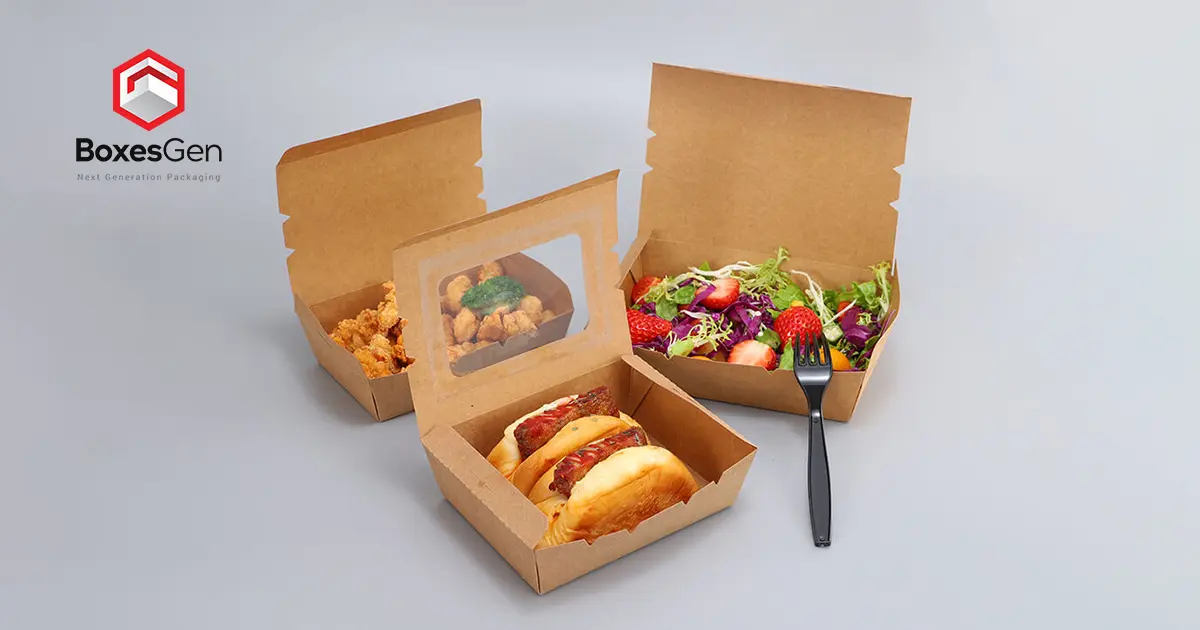
Educating customers about eco-friendly food packaging is vital to fostering a deeper understanding and appreciation for sustainable practices. Small businesses can adopt several strategies to raise awareness:
- Transparent Communication
Integrate sustainability messaging into the brand’s marketing and communication materials. Communicate the reasons for choosing eco-friendly packaging, its environmental benefits, and how customers can actively support sustainable practices.
- Interactive Packaging
Consider incorporating QR codes or interactive elements on the packaging that direct customers to online resources, videos, or educational content about eco-friendly packaging and its environmental impact. This engages customers and encourages them to learn more about the sustainability initiatives of the brand.
- Social Media and Content Marketing
Leverage social media platforms and content marketing to share informative posts, articles, and videos about sustainable practices, recycling, and reducing waste. Engaging content can inspire customers to join the movement and advocate for eco-friendly packaging.
11. Tracking and Measuring Sustainability Impact
As small businesses make efforts to adopt eco-friendly food packaging for small businesses, it becomes essential to track and measure the sustainability impact of these initiatives. Implementing key performance indicators (KPIs) and conducting regular audits can provide valuable insights into the effectiveness of the sustainable packaging strategy.
KPIs to Consider:
Waste Reduction: Measure the amount of non-recyclable and non-biodegradable waste eliminated through eco-friendly packaging.
Carbon Footprint: Assess the reduction in greenhouse gas emissions by choosing sustainable materials and optimizing delivery routes.
Customer Feedback: Gather feedback from customers regarding their perception of the brand’s sustainability efforts and the impact on their purchasing decisions.
Supplier Compliance: Regularly assess suppliers’ adherence to sustainable practices and certifications.
12. Embracing a Circular Economy Approach
A circular economy approach aims to minimize waste and maximize the value of resources by keeping materials in use for as long as possible. Small businesses can adopt circular economy principles in their packaging strategy by:
Reusable Packaging Programs: Introduce refill programs or incentivize customers to return packaging for reuse, reducing the need for single-use materials.
Recycling Initiatives: Collaborate with local recycling facilities to ensure eco-friendly packaging materials are correctly sorted and recycled.
Upcycling: Explore creative ways to repurpose packaging waste into new products or materials, adding value and extending their lifespan.
13. Collaborative Initiatives and Industry Partnerships
Collaboration is key to driving the widespread adoption of eco-friendly food packaging. Small businesses can join industry associations, non-profit organizations, and other stakeholders to pool resources, share best practices, and advocate for sustainable packaging policies. Collaborative initiatives can include:
- Packaging Innovation Hubs
Participate in or support packaging innovation hubs that bring together researchers, manufacturers, and businesses to explore new sustainable packaging materials and designs. These hubs provide a platform for knowledge exchange and foster creativity in finding eco-friendly solutions.
- Sustainable Packaging Awards
Participate in sustainable packaging awards or competitions recognizing businesses adopting eco-friendly practices. These accolades showcase the business’s commitment to sustainability and provide networking opportunities and exposure to potential customers and investors.
- Supplier Collaboration for Sustainability
Engage with suppliers to ensure they share the same sustainability goals. Collaborate with them to improve the eco-friendliness of their products and explore ways to reduce packaging waste throughout the supply chain.
14. Eco-Friendly Packaging and Brand Image

Adopting eco-friendly food packaging significantly impacts a small business’s brand image and reputation. Consumers increasingly associate eco-consciousness with responsible and ethical practices. Here’s how sustainable packaging can shape brand perception:
- Green Brand Identity
Businesses can create a strong green brand identity by using eco-friendly packaging materials and prominently displaying sustainability initiatives. This identity aligns with the values of environmentally conscious consumers and helps build brand loyalty.
- Enhanced Customer Engagement
Eco-friendly packaging can create an emotional connection with customers, showing that the business cares about environmental preservation. Customers who resonate with these values are more likely to engage with the brand through repeat purchases, positive reviews, and word-of-mouth referrals.
- Storytelling and Marketing Potential
Sustainable packaging offers a compelling story for businesses to share with their customers. Through marketing campaigns, businesses can educate their audience about the positive impact of eco-friendly choices, fostering a deeper connection and reinforcing their commitment to sustainability.
15. Regulatory Landscape and Eco-Friendly Packaging
As awareness of environmental issues grows, governments and regulatory bodies are taking action to address packaging waste. Small businesses must stay informed about evolving regulations related to eco-friendly packaging to ensure compliance and avoid penalties.
- Bans on Single-Use Plastics
Many regions have implemented or are considering bans on certain single-use plastic items, such as straws, cutlery, and food containers. Small businesses must find sustainable alternatives to comply with these regulations and maintain business continuity.
- Extended Producer Responsibility (EPR)
EPR is a policy approach where manufacturers and producers are held responsible for the entire life cycle of their products, including their packaging. This means businesses may be required to invest in the collection, recycling, or safe disposal of packaging waste. Embracing eco-friendly packaging can help businesses reduce their EPR obligations.
- Green Certifications and Labels
Consumers often look for eco-friendly certifications and labels on packaging to verify sustainability claims. Understanding the various certifications, such as Forest Stewardship Council (FSC), BPI Certified Compostable, and Green Seal, can help businesses make informed choices while communicating their commitment to sustainability.
16. Future Trends in Eco-Friendly Food Packaging
The field of eco-friendly food packaging is continually evolving as innovations and technologies emerge. Several trends are shaping the future of sustainable packaging for small businesses:
- Biodegradable Films and Coatings
Researchers are working on developing advanced biodegradable films and coatings that can extend the shelf life of food while remaining environmentally friendly. These innovations can significantly reduce food waste and improve overall sustainability.
- Edible Packaging
Edible packaging from seaweed, rice, or corn is gaining attention as a sustainable alternative. Edible packaging can eliminate waste, offering a novel and eco-friendly way to consume packaged food.
- Smart Packaging Solutions
Smart packaging integrated with sensors and indicators can help monitor food freshness and quality. Smart packaging can contribute to sustainability efforts by reducing food spoilage by minimizing food waste.
Final Words
Embracing eco-friendly food packaging is a moral responsibility and a smart business move for small food businesses. By using sustainable materials, custom food boxes, and adopting eco-friendly practices for food subscription boxes and food delivery, these businesses can reduce their environmental impact and attract a growing customer base of eco-conscious consumers. Through innovative and thoughtful packaging, small businesses can lead towards a more sustainable future.
FAQs
Why Is Eco-Friendly Food Packaging Essential for Small Businesses?
Eco-friendly food packaging is crucial for small businesses as it aligns with the growing consumer demand for sustainable practices. Choosing environmentally responsible packaging showcases a commitment to preserving the environment, which enhances the brand reputation and attracts eco-conscious customers. Moreover, as regulations on single-use plastics and non-biodegradable materials become stricter, adopting eco-friendly packaging ensures compliance and avoids potential penalties.
How Can Small Businesses Overcome the Perceived Higher Cost of Eco-Friendly Packaging Materials?
Although eco-friendly materials may have a higher initial cost, the long-term benefits often outweigh the investment. Small businesses can offset these expenses by exploring local suppliers, bulk purchasing options, and government incentives for sustainability initiatives. As demand for eco-friendly materials increases, costs will likely decrease, making them more accessible for small businesses.
How Can Small Businesses Educate Their Customers About The Importance Of Eco-Friendly Food Packaging?
Small businesses can educate their customers through transparent communication, interactive packaging, and social media and content marketing. Communicate the reasons for choosing eco-friendly packaging and the positive impact on the environment, and encourage customers to participate in sustainable practices. QR codes or interactive elements on packaging can direct customers to online resources and educational content about eco-friendly packaging and its benefits.
What Are Some Innovative Sustainable Materials for Eco-Friendly Food Packaging?
Innovative sustainable materials for eco-friendly food packaging include bioplastics from renewable sources, bagasse derived from sugarcane waste, mushroom packaging from agricultural waste, and compostable materials like PLA (Polylactic Acid) and compostable films. Additionally, cardboard and glass are recyclable materials widely used for custom food boxes and food product packaging.
How Can Small Businesses Measure the Sustainability Impact of Their Eco-Friendly Packaging Initiatives?
To measure the sustainability impact of eco-friendly packaging initiatives, small businesses can use key performance indicators (KPIs) such as waste reduction, carbon footprint, customer feedback, and supplier compliance. Tracking and auditing these metrics regularly provide valuable insights into the effectiveness of sustainable packaging strategies, helping businesses continuously improve their environmental performance.

